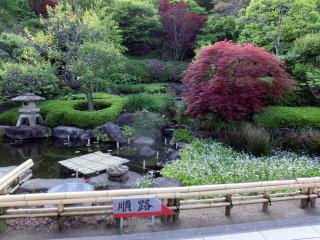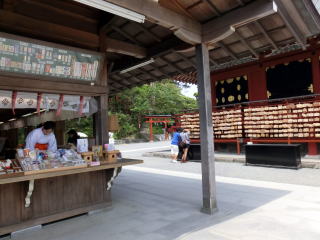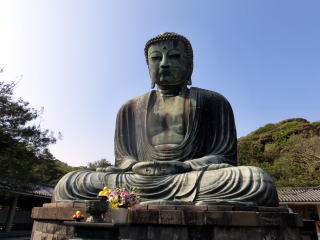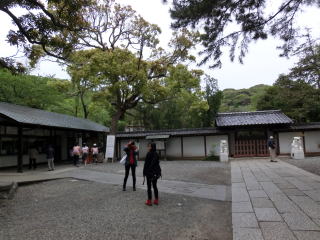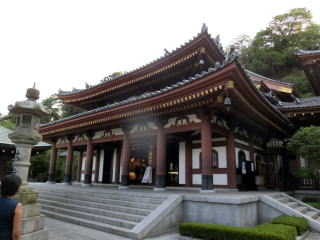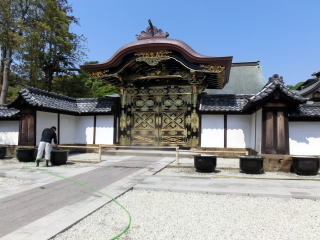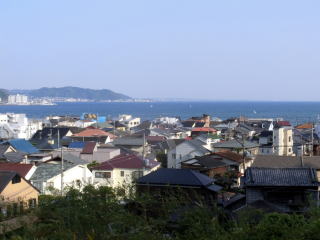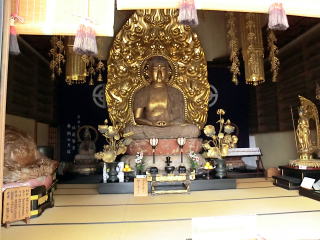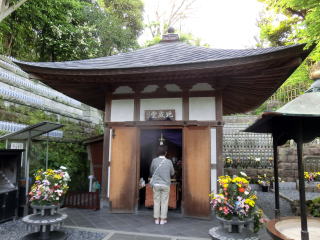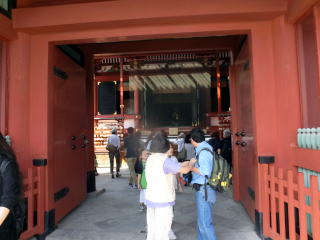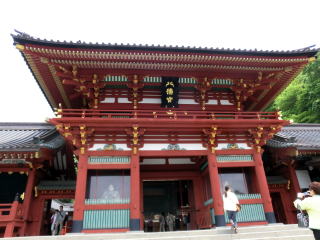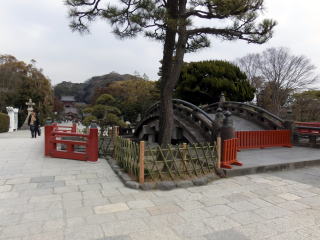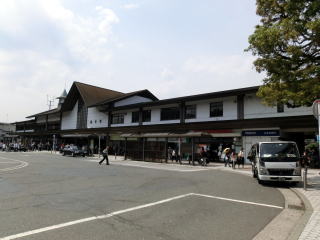(2), Daibutsu, the great image of Buddha of bronze
The image of Amitabaha in Amida-do
Jizo-do
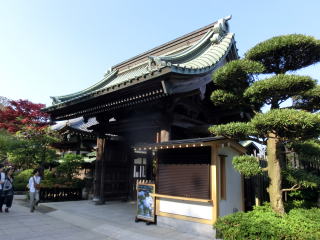
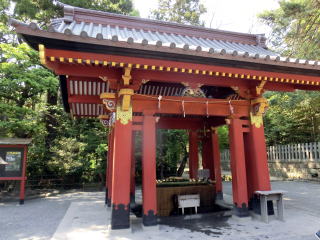
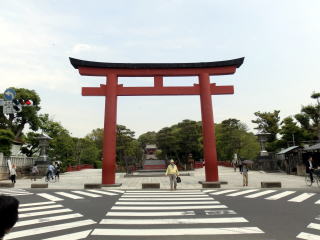
Kamakura city is situated southwest and 57 km from Tokyo, and one gets
there by the train
of JR Yokosuka or Shonan Line in one hour.
The city is surrounded at the three sides by hills and faces the Sagami
bay at the southern side.
Its population is 174,186 as of 1st January, 2012.
MINAMOTO no Yoriyoshi, head of the big samurai clan constructed Tsurugaoka Wakamiya
shrine, predecessor of Tsurugaoka Hachimangu shrine near Yuigahama beach,
Kamakura
in 1063 after he succeeded in the suppression of a big local rebellion
in Tohoku region,
northern Japan against the Imperial court.
MINAMOTO No Yoritomo, great-great-grandson of MINAMOTO Yoriyoshi, came
to Kamakura
in 1180 and moved the shrine to the present place of Tsurugaoka Hachimangu shrine and
started constructing Kamakura city around it.
He established the first shogun's government in Kamakura in 1185, what
was the starting
point of samurai's administration until 1867, and the city became the first
seat of samurai's
government.
The shogun's government with its Regent, Hojo clan, lasted from 1185 to
1333 at the seat of
Kamakura, where the first samurai culture flourished.
We call it the Kamakura era. Therefore we see money temples with many Buddha
images,
shrines and historical places in the city.
These days the city has been soliciting the UNESCO to register the city of Kamakura
on the world heritage list.
The gate of Karamon
Houden
Butsuden, ex-mausoleum of the wife
of the second shogun de theTokugawas,
Tokugawa Hidetada
The main gate
The KENCHOJI ZEN Temple was constructed by the fifth regent of Kamakura'
shogun,
Hojo Tokiyori, in 1253 as the first training center of Zen meditation.
The Temple is along the Kamakura Kaido highway, and 15 minutes from the
JR Kita Kamakura
station and the Tsurugaoka Hachimangu Shrine on foot.
3, The KENCHOJI ZEN Buddhist TEMPLE
The big image of Buddha is of bronze
and hollow. People can enter
inside from the left side.
The gate of Kotokuin Buddhist temple
The great image of Buddha of bronze is in the Kotokuin Buddhist temple,
which is located
7 minutes on foot from Hase station of ENODEN Line passing by the Hase Temple.
The great image was completed in 1252, and is 13.35m high with weight of
12 tons and
head of 2.35m.
An unprecedented great tsunami carried away the building in 1498, which
covered the image,
and left it in the open air. Later, the great Kanto earthquake damaged its neck and pedestal
in 1923. However the major part of the great image remains intact, while
the major part of
that of Buddha in Nara had been fired and destructed several times and
was restored later.
This is the main sanctuary where the Kannon
image with 11 heads is venerated.
The image is 9.18m high.
The Miura Peninsula and Sagami Bay are
seen from the compound of Hase temple.
The temple has a pond behind the main gate.
The main gate of the temple
Tokudo, priest sculpted two Kannon images with 11 heads from trunks of
camphor tree
in Yamato province ( at present , Nara province) in 721.
The two images are very big with 9.18m of height, one of two was put at the Hase temple
in Yamato province and another was set float at sea in order to spread
Buddhism, which
reached the beach in Kamakura in 736.
No Usasaki, high ranking aristocrat, grandson of No Kamatari,
constructed Hase Kannon temple in Kamakura so as to venerate it.
Later, Ashikaga Takauji, the first shogun of Muromachi government, donated gold leaves
in 1342 to cover all the statue and Ashikaga Yoshimitsu, the third shogun
a halo.
In the precincts there are Amida-do, Daikoku-do, Benten-do, Jizo-do and
Rinzo for keeping
the Buddhist scriptures
(1) The HASE Buddhist Temple
We take a train of ENODEN private line at the Kamakura station by JR Kamakura
station
and get to Hase in 12 minutes. After getting off a train we walk 5 minutes
to Hase Buddhist
temple and 7 minutes to KOTOKUIN Buddhist temple with the great image
of Buddha. YUIGAHAMA beach is very near from Hase station walking a few
minutes.
2, The HASE and KOUTOKUIN Buddhist Temples
The sanctuary is seen through the gate.
They sell many kinds of lucky charms at
the left shop and many EMA tablets or horse
picture tablets are hanged over at right.
This is the frontal view of the gate to
the sanctuary.
This stone stairway leads to Tsurugaoka
Hachimangu shrine.
This is water purification site , where visitors
purify themselves with the water in a big basin
in the center.
This building is MAIDEN, theater of Noh
dance is located in front of the sanctuary.
This is the second gate at the end of
Wakamiya Odori street.
This bridge is situated behind the second
bridge and is called Drum bridge,
under which there is a big pond.
This is the first gate to Tsurugaoka
Hachimangu shrine and Wakamiya Odori
street starts here. The street was constructed
by MINAMOTO no Yoritomo in 1182.
This building is Kamakura station where we
reach in about one hour by train from Tokyo,
The Tsurugaoka Hachimangu Shrine was moved at the present place by MINAMOTO
no Yoritomo, the first shogun in 1180.
The shrine has been venerated as the home of gods of wars since then.
1, The Tsurugaoka Hachimangu Shrine
